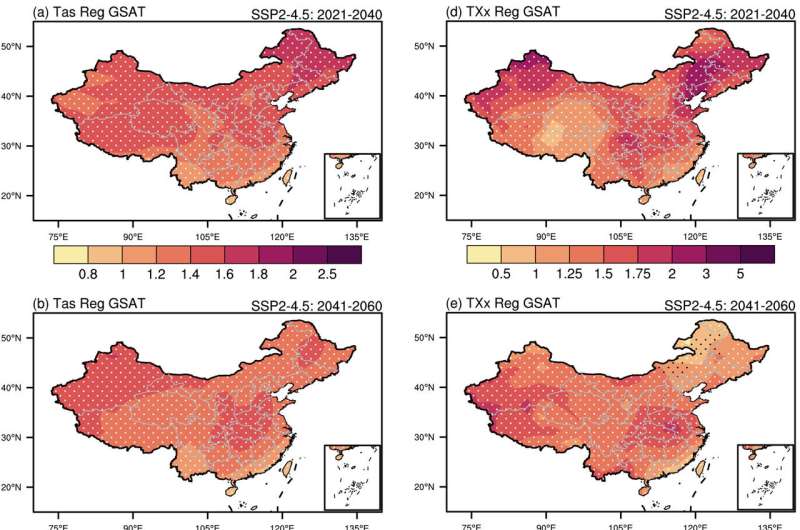This article has been reviewed according to Science X's editorial process and policies. Editors have highlighted the following attributes while ensuring the content's credibility:
fact-checked
peer-reviewed publication
trusted source
proofread
Researchers correct overestimation by 'hot model' climate projections on warming in China

Changes in mean temperature and temperature extremes at regional scale under a warmer climate have received much attention. A subset of CMIP6 climate models, known as "hot models," have been projecting more significant warming due to greenhouse gases.
However, researchers from the Institute of Atmospheric Physics (IAP) of the Chinese Academy of Sciences (CAS) and the Pacific Northwest National Lab in the U.S. have revealed that "hot model" climate projections have been overestimating the warming in China. They introduce a novel method to correct this issue, potentially reshaping climate change adaptation and mitigation strategies.
The study was published in Geophysical Research Letters on Oct. 14.
They developed an efficient emergent constraint method in two steps. First, they corrected future warming projections using present-day global mean surface air temperature warming. Then, they adjusted the projection results using local residual warming to account for local feedback.
Results showed that the future warming of mean and extreme temperatures, constrained by this method, is 1.29°C and 1.20°C lower than the raw projections for the end of the 21st century under the high-emission scenario. Approximately half model uncertainty is reduced after constraint. Moreover, compared to the raw projections, 78% of the land area and 85% of the population will experience temperature extremes.
In addition to its implications for China, the two-step constraint method introduced in this study addresses a common issue in all CMIP6 climate projections, offering a potential methodology for correction.
The study is likely to have broad relevance and plays a pivotal role in reshaping how the global community responds to the CMIP6 mismatch with current consensus expectations.
More information: Ziming Chen et al, Emergent Constrained Projections of Mean and Extreme Warming in China, Geophysical Research Letters (2023). DOI: 10.1029/2022GL102124
Journal information: Geophysical Research Letters
Provided by Chinese Academy of Sciences




















